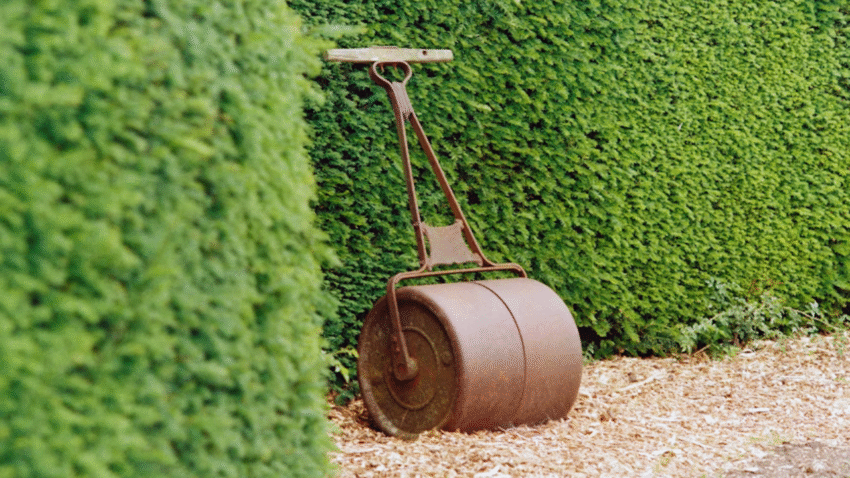Introduction
Are you tired of seeing your water bill soar every summer just to keep your grass green? You’re not alone. Learning how to conserve water while caring for your lawn is one of the best things you can do for your wallet, your lawn’s health, and the environment. This complete step-by-step guide will help you water wisely, choose better lawn care practices, and still enjoy a lush, thriving yard — even during dry spells.
Why Conserving Water Matters for a Healthy Lawn
Many homeowners think more water automatically means greener grass — but that’s not always true. Overwatering can lead to shallow roots, fungal diseases, and wasted resources. By watering deeply but less often, using smart lawn care habits, and choosing the right grasses, you’ll encourage stronger roots that can better withstand heat and drought.
Plus, saving water means less runoff, less erosion, and more money in your pocket — all while supporting your local community’s water supply.
Step-by-Step Guide to Water-Smart Lawn Care
Here’s exactly how to grow a beautiful lawn while using less water:
1. Choose the Right Grass Type
The best water-saving strategy starts before you even turn on the sprinklers. Choose a grass variety suited to your climate:
- Cool-season grasses (like fescue or Kentucky bluegrass) need more water in hot months.
- Warm-season grasses (like Bermuda, zoysia, or buffalo grass) are naturally more drought-tolerant.
For arid regions, consider low-water options like native grasses or even replacing parts of your lawn with drought-resistant ground covers.
2. Water Deeply and Infrequently
Instead of daily shallow watering, give your lawn one or two deep soakings per week. This encourages roots to grow deeper, making your grass more drought-resistant.
Aim for about 1 inch of water per week, including rainfall. Use a rain gauge or a small empty can to measure how much water your sprinklers deliver in 15–30 minutes.
3. Water at the Right Time
Water early in the morning — ideally between 5 AM and 9 AM — when temperatures are cooler and winds are calm. This minimizes evaporation loss and gives your grass time to dry before nightfall, reducing disease risk.
Avoid watering during the heat of the day or late in the evening.
4. Adjust Sprinklers for Maximum Efficiency
Check that your sprinklers are watering your lawn — not your driveway or sidewalk! Adjust heads to reduce overspray and fix any leaks or clogged nozzles. Using efficient irrigation systems like drip lines or soaker hoses for garden beds can also cut water waste.
5. Use Smart Controllers and Rain Sensors
Upgrade to a smart irrigation controller that adjusts watering based on weather conditions. Rain sensors or soil moisture sensors can automatically shut off your system during or after rain, saving water when nature does the job for you.
6. Mow Properly to Shade the Soil
Cutting your grass too short stresses it and exposes soil to the sun, which dries it out faster. Mow at the recommended height for your grass type — generally 3–4 inches for most lawns — to help shade roots and conserve moisture.
Keep mower blades sharp for clean cuts that heal quickly.
7. Aerate to Improve Water Penetration
Compacted soil repels water and leads to runoff. Annual aeration loosens the soil, allowing water, air, and nutrients to reach the root zone where they’re needed most.
Combine aeration with top dressing using compost to improve soil structure and water retention even more.
8. Mulch and Leave Clippings
Grass clippings act like natural mulch, shading the soil and reducing evaporation. Mulching mowers finely chop clippings and return them to the lawn, providing nutrients and keeping moisture in the soil.
In garden beds, use organic mulch like bark, straw, or shredded leaves to lock in soil moisture.
Common Mistakes to Avoid
Mistake 1: Watering Too Often, Too Little
Solution: Switch to deep, infrequent watering to promote deeper, drought-resistant roots.
Mistake 2: Ignoring Weather Conditions
Solution: Turn off sprinklers when rain is forecast or use a smart controller to avoid watering unnecessarily.
Mistake 3: Mowing Too Short
Solution: Never remove more than one-third of the grass blade at once. Taller grass shades the soil and reduces evaporation.
Mistake 4: Watering at the Wrong Time of Day
Solution: Always water early in the morning for maximum efficiency.
Mistake 5: Overlooking Soil Health
Solution: Improve soil structure with compost and aeration to increase water absorption and reduce runoff.
Extra Lawn Care Tips & Hacks
✅ Use a Rain Barrel: Collect rainwater from gutters and downspouts to water your lawn or garden for free.
✅ Try Lawn Alternatives: Consider replacing some lawn areas with drought-tolerant plants, ornamental grasses, or rock gardens.
✅ Install a Windbreak: Plant shrubs or install fences to reduce wind that dries out your lawn quickly.
👉 Check out our guide on “How to Maintain a Drought-Resistant Lawn” for more ideas to keep your yard beautiful and sustainable!
Conclusion
Learning how to conserve water while caring for your lawn isn’t just smart for your budget — it’s the key to creating a stronger, healthier yard that thrives in every season. By watering wisely, mowing right, improving your soil, and using efficient irrigation, you’ll enjoy a green lawn that doesn’t guzzle gallons unnecessarily.
Bookmark this guide and put these tips into practice — your lawn, your wallet, and your community will all thank you for it.
